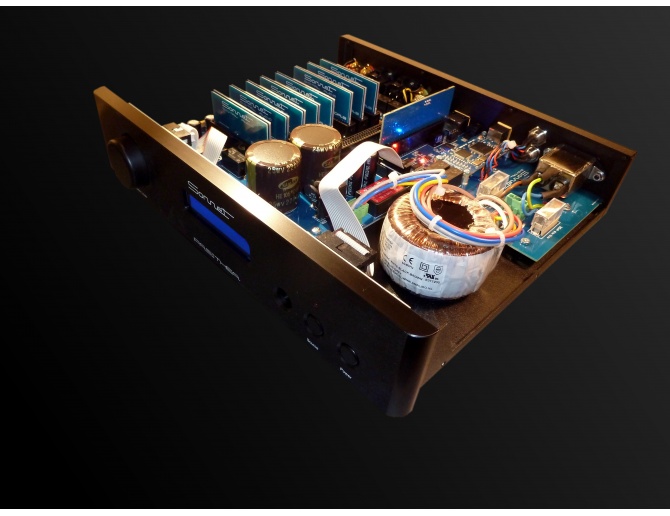In the world of digital audio, the quest for the most faithful reproduction of sound has led to the development of various digital-to-analog converter (DAC) technologies. One such technology that has garnered attention is the non-oversampling DAC. Unlike its oversampling counterparts, non-oversampling DACs take a different approach to converting digital signals into analog waveforms, emphasizing simplicity and potentially distinct sonic characteristics. In this article, we’ll delve into the intricacies of non-oversampling DACs, exploring their basic operation, characteristics, sound quality, trade-offs, and subjective preferences.
Basic Operation
At the heart of a non-oversampling DAC lies a straightforward principle: direct conversion. Unlike oversampling DACs, which employ oversampling techniques to increase the sample rate of the digital audio signal before conversion, non-oversampling DACs skip this intermediate step. Instead, they convert the digital audio signal directly into an analog waveform without any additional processing such as oversampling, digital filtering, or upsampling. This direct approach is characteristic of non-oversampling DACs and contributes to their simplicity.
Simplicity
Simplicity is a hallmark feature of non-oversampling DACs. With fewer components and processing stages compared to oversampling DACs, non-oversampling designs often boast simpler circuitry. This simplicity can lead to more straightforward designs, potentially resulting in cost savings and easier manufacturing. Additionally, the reduced complexity may appeal to audiophiles who value purity and minimalism in audio equipment.
No Oversampling
The absence of oversampling is a defining characteristic of non-oversampling DACs. Oversampling DACs increase the sample rate of the digital audio signal to reduce quantization errors and improve the signal-to-noise ratio. In contrast, non-oversampling DAC’s work directly with the original sample rate of the digital audio signal, bypassing the need for oversampling. While oversampling aims to enhance audio quality through increased digital processing, non-oversampling DAC’s prioritize a more straightforward conversion process.
Filtering
Non-oversampling DAC’s may incorporate analog filtering to remove high-frequency noise and image artifacts introduced during the conversion process. Unlike the digital filtering used in oversampling DACs, which relies on complex algorithms to achieve precise frequency response, analog filtering in non-oversampling DAC’s tends to be simpler. While this analog filtering may not offer the same level of precision as digital filtering, it aligns with the overall ethos of simplicity embraced by non-oversampling designs.
Sound Characteristics
One of the most intriguing aspects of non-oversampling DAC’s is their perceived sound characteristics. Advocates of non-oversampling DAC’s often claim that they offer a more natural and musical sound compared to oversampling DACs. This subjective perception of sound quality is influenced by factors such as tonal balance, imaging, and overall presentation. Non-oversampling DAC’s are said to preserve the integrity of the original audio signal without introducing excessive digital processing, resulting in a more organic listening experience.
Trade-offs
While non-oversampling DAC’s offer simplicity and potentially desirable sound characteristics, they are not without trade-offs. One notable trade-off is performance in terms of signal-to-noise ratio and dynamic range, especially at higher sample rates. Oversampling DACs, with their advanced digital processing capabilities, may outperform non-oversampling DAC’s in these aspects, particularly in demanding audio applications. Additionally, the simplicity of non-oversampling designs may limit their flexibility in addressing specific audio engineering challenges.
Subjective Preference
The choice between oversampling and non-oversampling DAC’s often boils down to personal preference and the requirements of audio reproduction systems. Some audiophiles gravitate towards the straightforward approach of non-oversampling DAC’s, appreciating their emphasis on simplicity and purity of sound. Others may prefer the potentially cleaner and more technically advanced performance of oversampling DACs, especially in critical listening environments or professional audio production settings. Ultimately, the decision rests on individual preferences and the specific goals of the audio system.
Conclusion
Non-oversampling DAC’s represent an alternative approach to digital-to-analog conversion, emphasizing simplicity and potentially different sonic characteristics compared to oversampling DACs. With their direct conversion principle, simplified circuitry, and perceived musicality, non-oversampling DAC’s offer a distinct option for audiophiles and audio enthusiasts alike. While they may not match the technical prowess of oversampling DACs in certain aspects, non-oversampling designs carve out a niche for those who prioritize simplicity and a more organic listening experience. As the quest for audio perfection continues, non-oversampling DAC’s stand as a testament to the diverse landscape of digital audio technologies.







